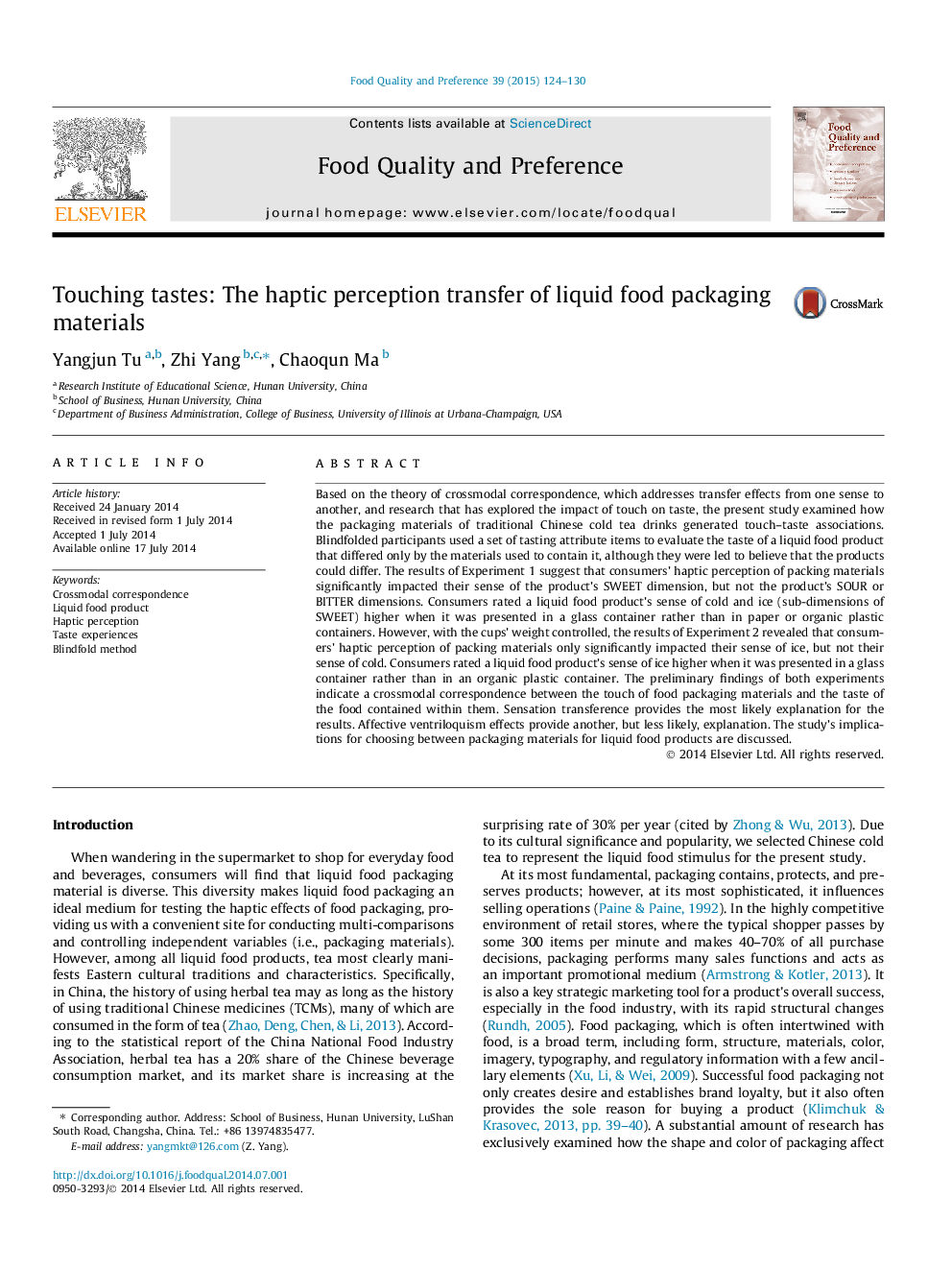| Article ID | Journal | Published Year | Pages | File Type |
|---|---|---|---|---|
| 4317101 | Food Quality and Preference | 2015 | 7 Pages |
•Icy taste of the food in the glass cup was higher than that in the paper cup.•Icy taste of the food in the glass cup was higher than that in the plastic cup.•Cold taste of the food in the glass cup was higher than that in the paper cup.•Cold taste of the food in the glass cup was higher than that in the plastic cup.
Based on the theory of crossmodal correspondence, which addresses transfer effects from one sense to another, and research that has explored the impact of touch on taste, the present study examined how the packaging materials of traditional Chinese cold tea drinks generated touch–taste associations. Blindfolded participants used a set of tasting attribute items to evaluate the taste of a liquid food product that differed only by the materials used to contain it, although they were led to believe that the products could differ. The results of Experiment 1 suggest that consumers’ haptic perception of packing materials significantly impacted their sense of the product’s SWEET dimension, but not the product’s SOUR or BITTER dimensions. Consumers rated a liquid food product’s sense of cold and ice (sub-dimensions of SWEET) higher when it was presented in a glass container rather than in paper or organic plastic containers. However, with the cups’ weight controlled, the results of Experiment 2 revealed that consumers’ haptic perception of packing materials only significantly impacted their sense of ice, but not their sense of cold. Consumers rated a liquid food product’s sense of ice higher when it was presented in a glass container rather than in an organic plastic container. The preliminary findings of both experiments indicate a crossmodal correspondence between the touch of food packaging materials and the taste of the food contained within them. Sensation transference provides the most likely explanation for the results. Affective ventriloquism effects provide another, but less likely, explanation. The study’s implications for choosing between packaging materials for liquid food products are discussed.
